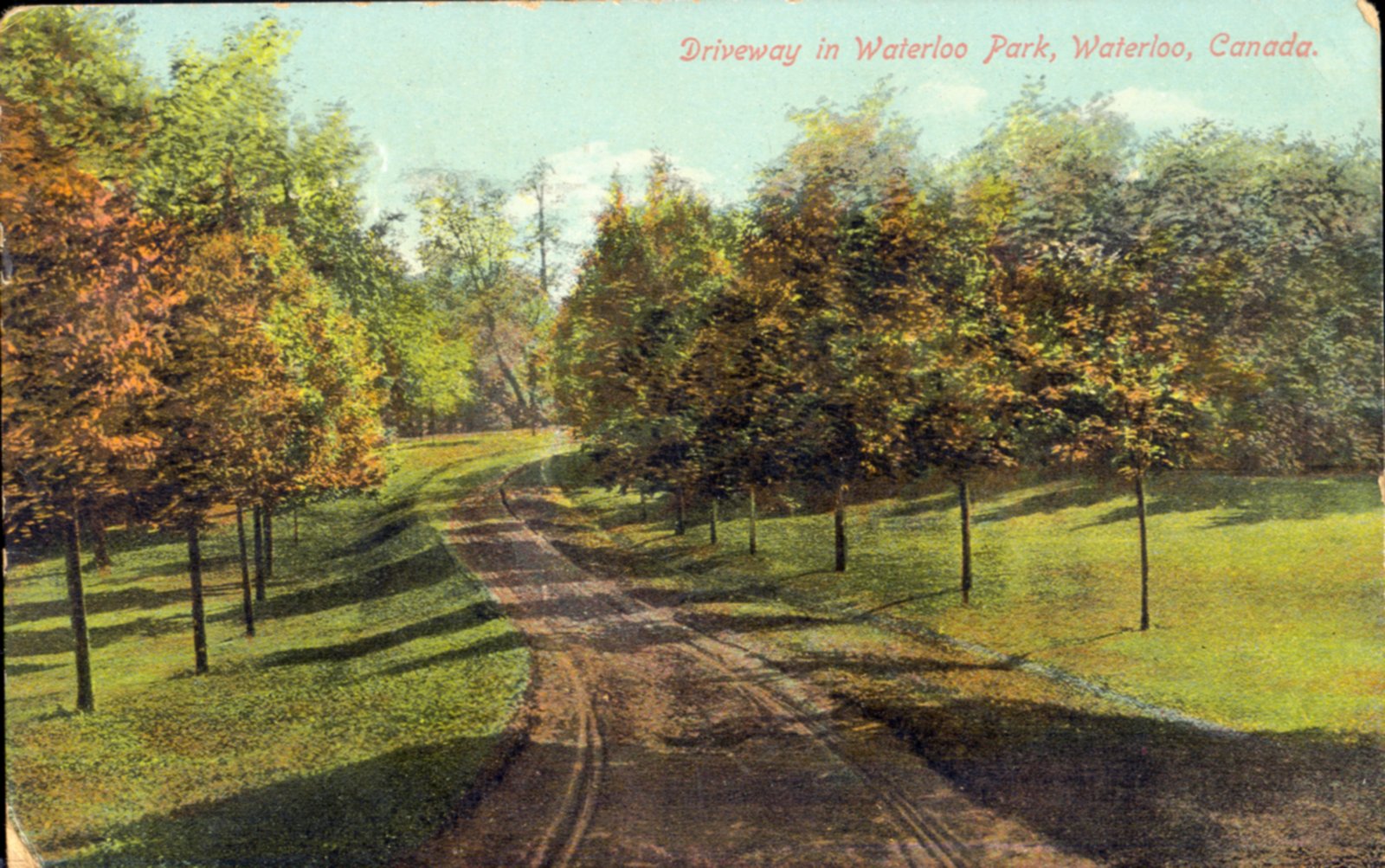

The Eby property was transformed from a farm into a park by the plans of an engineer from Toronto and the oversight of the park’s first superintendent, Andrew McIntyre.4 Andrew McIntyre was originally from Linwood but moved with his family to live in the old Eby farmhouse in the park when he became superintendent.5 Under McIntyre’s leadership, in the spring and summer of 1891, the following work was completed to transform the park:
“Fences, old buildings, stumps and rubbish of all kinds were removed and neatness and order took the place of untidiness and disorder. The old so-called picnic grounds on the west side were first of all cleared up, the knolls cut down, the hollows filled and the whole seeded down… On the East margin of the woods, on the elevated part of the grounds, a lawn tennis court, 100 by 100 feet was formed, which is now in beautiful condition for lovers of this popular game to engage in play…
The levelling [of the recreation grounds] outlined in the plan required the cutting of no less than 10,700 cubic yards from the hill on the east side. To accomplish this work ten men and two teams were employed…and 8,600 loads of earth were cut from the rising ground and filled into the hollow.” 6
The hard work of McIntyre and the workers paid off as Waterloo Park became the town’s new favourite spot to enjoy a picnic. Even after Berlin (Kitchener) opened Victoria Park in 1896, people from the neighbouring town still preferred Waterloo Park for its lovely grounds and picnic space. In May 1895, the Berlin newspaper published an article saying “the new Waterloo Park is taking our young people and their dollars out of town not only on holidays but regularly every week.”7
McIntyre was credited with being a “faithful, diligent and efficient” caretaker of the park.8 During his time as superintendent he also oversaw the general landscaping—including mowing the grass by hand until 1901—, the construction of terraces on the east side, the planting of 2,000 trees and a number of “driveways.”9 His term also saw the arrival of the athletic grounds, a boathouse, the bicycle track, the Victoria Jubilee Memorial Gateway and the grandstand. He resigned from his position in 1906.10


